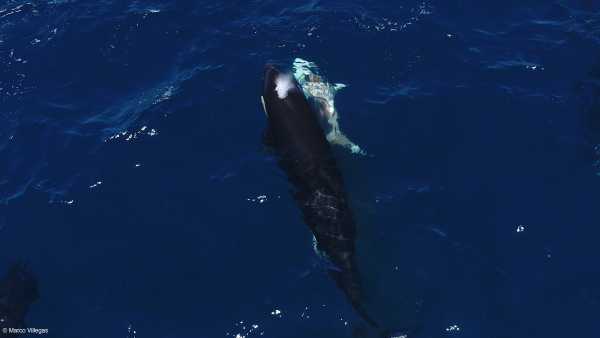
The instant an orca turned a young great white shark over to consume its liver was documented by researchers.(Image credit: Marco Villegas)
In groundbreaking observations, scientists have noticed killer whales in the Gulf of California consistently assaulting and feeding upon the livers of juvenile great white sharks.
According to a fresh study, the orcas (Orcinus orca) utilized a brutal but ingenious strategy to briefly incapacitate their target. The method entailed inverting the smaller sharks, which altered their awareness of what surrounded them and induced a hypnotic state referred to as tonic immobility.
“This brief condition renders the shark vulnerable, enabling the orcas to take out its liver, which is full of nutrients, and possibly ingest other organs too, before leaving the rest of the body behind,” stated Jesús Erick Higuera Rivas, the study’s main author and a marine biologist who directs the nonprofit research organization Conexiones Terramar, in a press release.
You may like
-
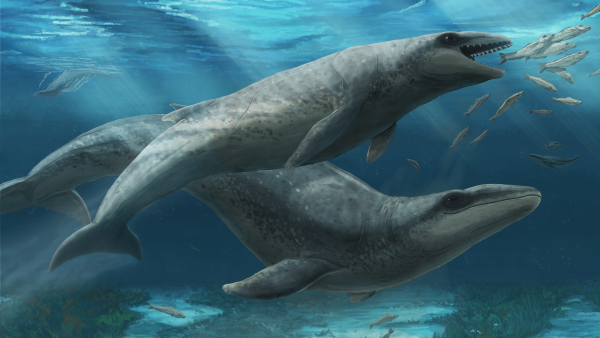
Ancient predatory whale with big eyes and razor-sharp teeth was ‘deceptively cute’
-

Fishers discover first-of-its-kind bright orange shark with two rare conditions in Caribbean
-
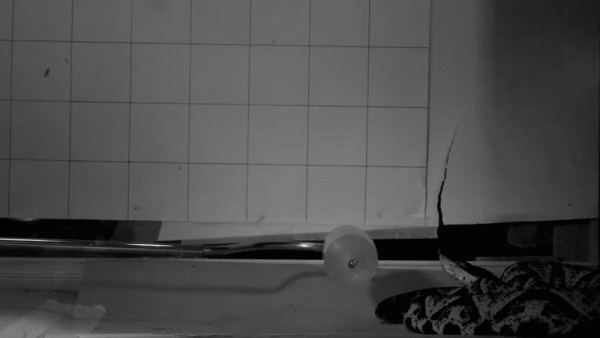
Venomous snake strikes captured in extreme detail through high-speed videos for first time
The orcas were then seen sharing the shark livers among themselves in three separate occurrences. The attacks were executed off the Mexican coast by Moctezuma’s pod, an orca collective named for a sizable male member who gained attention last year for brutally killing a whale shark (Rhincodon typus).
It was already understood that orcas hunted great white sharks (Carcharodon carcharias) in specific areas, including South Africa and Australia, however, reports of this behavior in the Northeast Pacific remain incredibly scarce, with the most recent verified sighting off the West Coast taking place in 1997. According to the study, sightings in South Africa and Australia have mostly involved adult great whites, whose considerable size and organs translate to more food for the orcas.
Only one instance exists of orcas preying on a young great white shark. The incident occurred in 2023 off the South African coast and involved an infamous orca named Starboard; the predator clasped a young great white shark’s pectoral fin, propelling it ahead several times before disemboweling it, according to the report.
The new observations, which were released on Monday (Nov. 3) in the journal Frontiers in Marine Science, suggest that attacks on young great whites by orcas are more prevalent than previously believed by scientists.
“For the first time, we are seeing orcas consistently target juvenile white sharks,” expressed study co-author Salvador Jorgensen, a marine ecologist at California State University, Monterey Bay, in the statement. “Adult white sharks respond swiftly to hunting orcas, completely abandoning their seasonal aggregation locations and not going back for several months. However, these juvenile white sharks might be unfamiliar with orcas. It remains unknown whether white shark anti-predator escape reactions are instinctive or need to be acquired.”
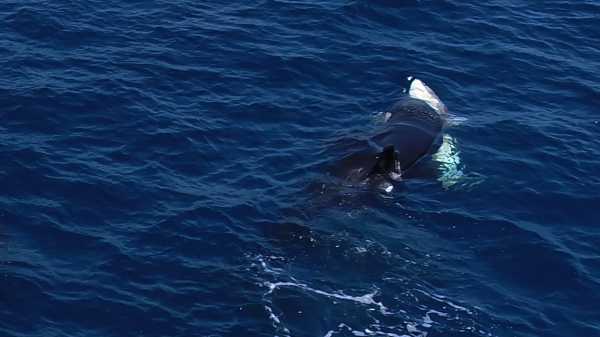
An orca is feasting on the liver of a young great white shark.
According to the study, two of the three attacks happened in August 2020. A group of five female orcas from Moctezuma’s pod pursued a young great white shark until it was exhausted, drove it to the surface, and flipped it onto its back. The researchers noted that the orcas eventually forced the shark underwater, and when they emerged, they had its liver in their mouths. Shortly after this kill, the orcas sought another, pursuing and disemboweling a second young great white.
The third assault occurred in August 2022 and followed a similar pattern. A group of five orcas, which included an adult male, flipped a young great white as if it were a pancake, propelling it to the surface and biting it. The shark’s gills spewed blood, and the orcas were able to seize its liver due to how far it protruded from its abdomen.
You may like
-
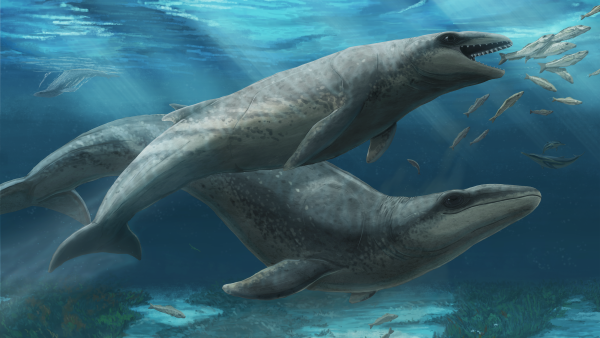
Ancient predatory whale with big eyes and razor-sharp teeth was ‘deceptively cute’
-
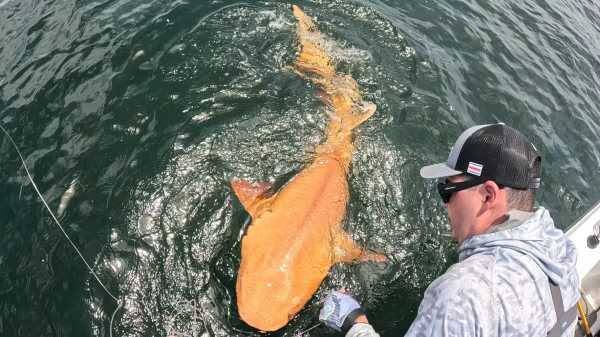
Fishers discover first-of-its-kind bright orange shark with two rare conditions in Caribbean
-

Venomous snake strikes captured in extreme detail through high-speed videos for first time
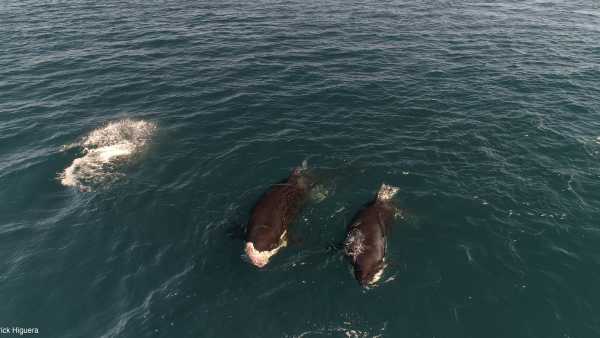
Orcas are seen swimming away from one of the young great white shark attacks, with its liver still intact.
A more detailed examination of the sharks’ wounds revealed that tonic immobility may lessen the likelihood of the orcas being bitten while attempting to extract the liver. Selecting juveniles as prey also reduces the danger to orcas, although it remains unclear whether orcas in the Gulf of California exclusively target young sharks or frequently attack adult great whites as well.
RELATED STORIES
—’We completely freaked out’: Orcas are attacking boats in Europe again
—Wild orcas offer humans food. Could they be trying to make friends — or manipulate us?
—Orcas filmed making out in the wild for first time
“This conduct serves as proof of the sophisticated intelligence, strategic thought, and refined social learning of orcas, as their hunting strategies are handed down over generations within their pods,” Higuera Rivas noted.
The reason for this behavior being observed now might be due to the recent start of great whites breeding in Mexican waters. It seems that the shifting distribution of great white shark nurseries has been brought on by rising ocean temperatures and climatic events like El Niño, and Moctezuma’s pod is probably capitalizing on the rising number of juveniles in the Gulf of California.
According to study co-author Francesca Pancaldi, a marine biologist at the National Polytechnic Institute in Mexico, other orca pods in the region may catch on. She stated, “Thus far, we have only seen this pod consume elasmobranchs [sharks and rays].” “There might be more.”
TOPICSGreat white shark

Sascha PareSocial Links NavigationStaff writer
Sascha is a staff writer for Live Science, based in the U.K. She earned a bachelor’s degree in biology from the University of Southampton in England and a master’s degree in science communication from Imperial College London. Her work has appeared in The Guardian and the health website Zoe. Outside of writing, she is passionate about playing tennis, baking bread, and searching through second-hand stores for undiscovered treasures.
You must confirm your public display name before commenting
Please logout and then login again, you will then be prompted to enter your display name.
LogoutRead more
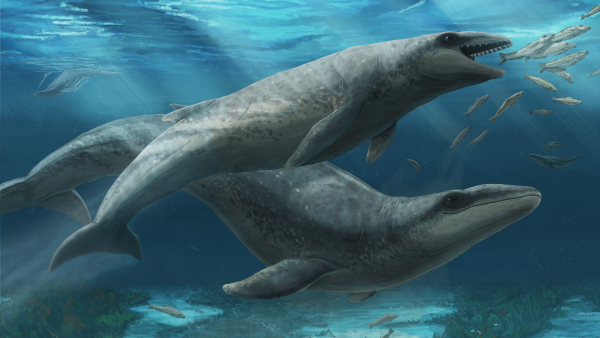
Ancient predatory whale with big eyes and razor-sharp teeth was ‘deceptively cute’
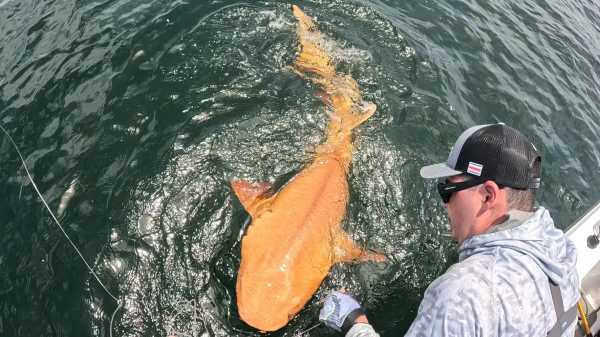
Fishers discover first-of-its-kind bright orange shark with two rare conditions in Caribbean
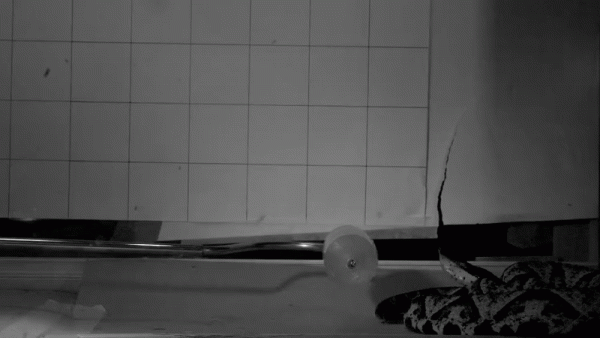
Venomous snake strikes captured in extreme detail through high-speed videos for first time

70 million-year-old hypercarnivore that ate dinosaurs named after Egyptian god
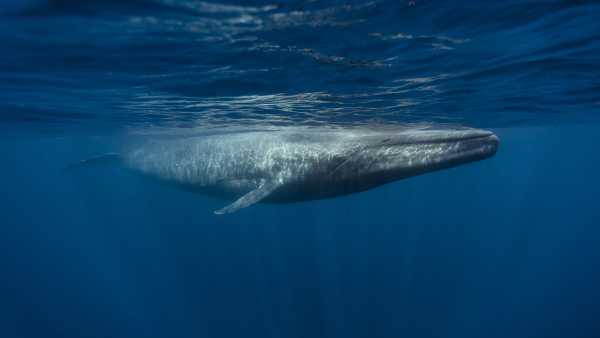
No, blue whales aren’t going silent off California. Here’s why.

Jaguar in Brazil smashes record for the species’ longest documented swim
Latest in Orcas
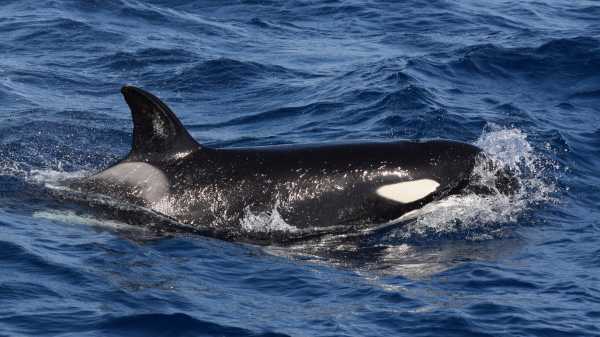
‘We completely freaked out’: Orcas are attacking boats in Europe again
Sourse: www.livescience.com





